| 1 | Speckled racer |
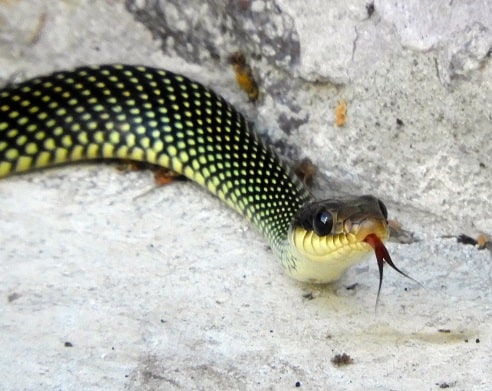
One of the mostly finely patterned snakes in Nicaragua. The speckled racer (Drymobius margaritiferus) measures up to 127cm, and is non-venomous, yet wildly unpredictable. They play dead approximately one quarter of the time when confronted by humans, but can also bite savagely, with their huge eyes swivelling madly.
This fast-moving species is widespread across central America, ranging from Panama to extreme southern Texas, where they reside in just 1 county. Nicaragua lies at the heart of this empire, with no shortage of sightings every hour of every day.
Speckled racers are flexible and appear in a variety of habitats, including savannahs, forests, pastures, roadsides and forest clearings. They have a slight preference for hot, humid areas with a nearby water source, sometimes including scenic nature reserves with wooden boardwalks, which tourists can watch them from.
Its scientific name, Drymobius margaritiferus, translates to “pearls” in Latin, referencing the bright markings topping each scale. The base colour is blue-black, but the pale markings vary from green to blue, like disco lights shining through in darkness. Speckled racers have a brown cap on their head, and large bulbous eyes. Frogs and toads make up 86% of its diet, which are usually consumed headfirst, with one species being the Mahogany tree frog.
| 2 | Black-banded snake |
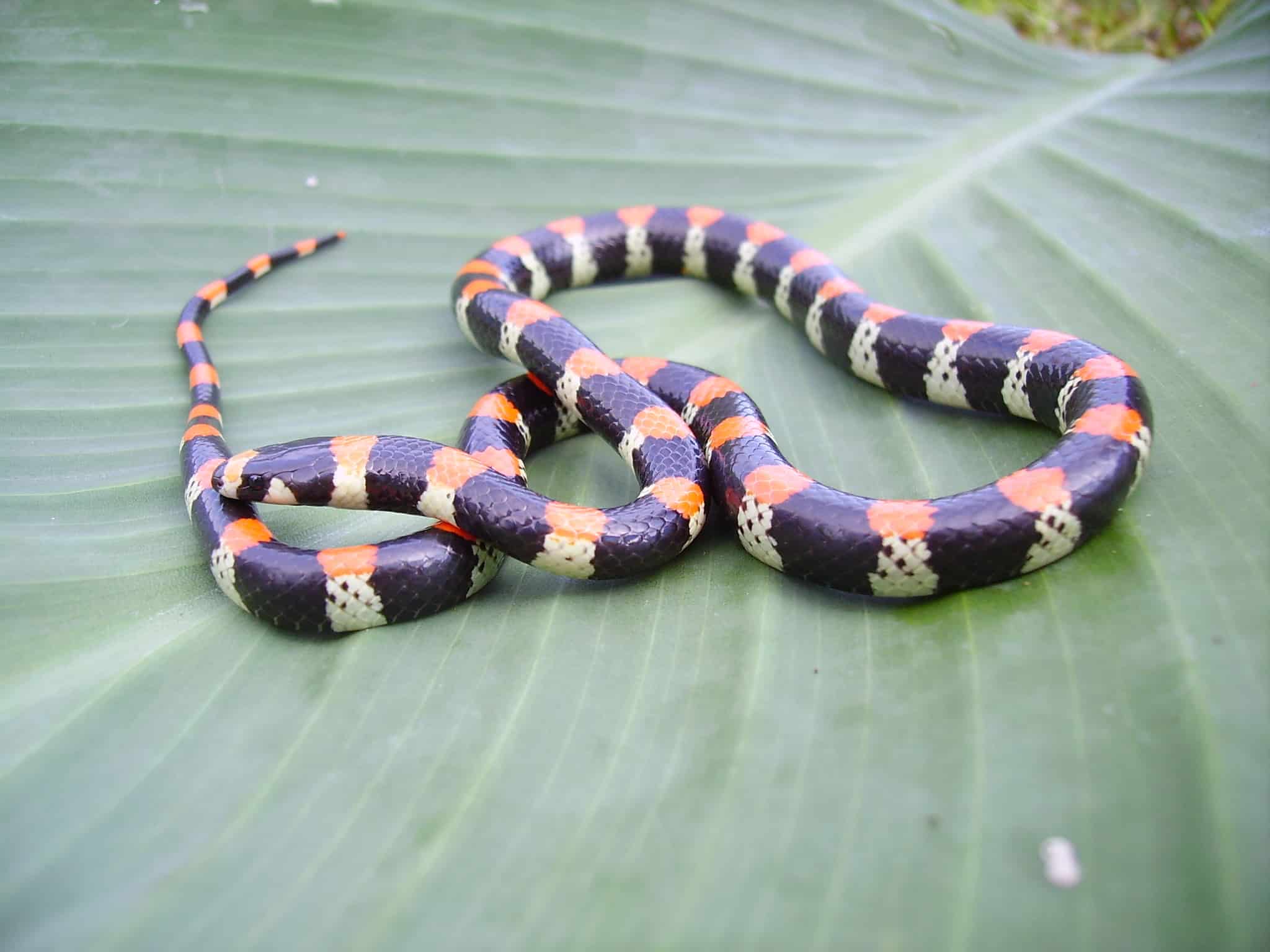
A centipede-eating snake, which risks life and death to swallow its dangerously venomous prey. Scoleophis atrocinctus also preys on arachnids and insects, and ranges from Costa Rica, through the entire western half of Nicaragua, and into Honduras. This is the sole member of the Scolecophis genus, with its closest relatives being the Tantilla burrowing snakes (including Florida’s rim-crowned rock snake).
Scolecophis atrocinctus is only a small snake, with a maximum confirmed length of 47cm. They’re most common in patches of forests directly above hilly pasture land, or along the edge of a forest trail. They’re a semi-underground species, and one of their favourite hideaways is loose strips of bark peeling away from a tree base. Males of this species often duel each other, rolling around on the forest floor, occasionally sinking their teeth into each other’s necks.
This is a coral snake mimic with a unique pattern. Its body features alternating black and white bands, but the spine of each white band is dabbed with red paint. The white bands are also covered with carefully arranged red spots.
| 3 | Black-banded cat-eyed snake |
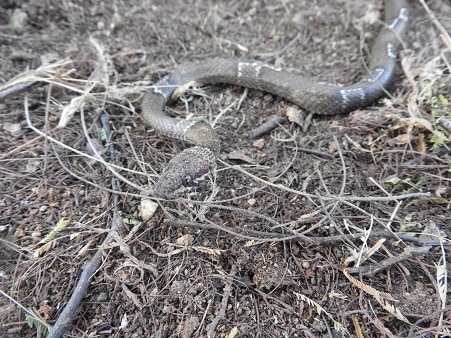
The Leptodeira cat-eyed family contains 17 species across the Americas, and this is Nicaragua’s most common member. Black-banded cat-eyed snakes are nocturnal, and are mostly commonly encountered on paved roads through forests. They feed primarily on reptiles, with one favourite being the yellow-bellied gecko. They have a weak venom which secretes from their rear fangs, which is insufficient to kill a human, but more than enough to subdue a lizard.
When hunting, this snake wraps 3 complete body coils around its prey. This species is a slow eater, which can take 31 minutes to swallow a single gecko. They’re also clumsy; one Leptodeira nigrofasciata captured a gecko on a tree branch, and then immediately plummeted to the ground, still wrapped around its hard-caught prey.
Leptodeira nigrofasciata peaks at 60cm, and has very clean patterns: a dense black head with a white collar, followed by alternating black and white stripes with no subtle markings inbetween. The further south you travel in Central America, the yellower the pale stripes become. Leptodeira nigrofasciata is centred around Nicaragua, but also inhabits Costa Rica to the south and Honduras to the north, hugging the Pacific coastline.
| 4 | Orange-bellied swamp snake |
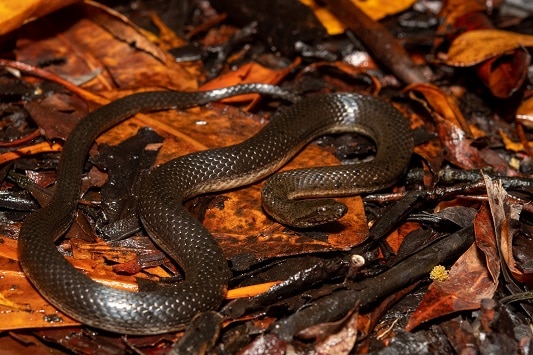
It’s unlikely that more than 500 people in the USA have heard of this snake. Tretanorhinus nigroluteus is indeed a swamp snake, and spends much of its life in one position: with its body submerged in water and just its head poking above the surface. For this, they’ve evolved special nostrils which are angled upwards on the head, to breathe in the thick jungle air while staying in perfect disguise.
Orange-bellied swamp snakes average at 55cm (max 89cm), and mainly stick to lower altitudes, from 0-850 metres above sea level. They also inhabit Costa Rica and Honduras, clinging to the Caribbean coast. Their lifestyle is to stay in the water most of the day, only venturing to land after nightfall. When frightened, Tretanorhinus nigroluteus almost always flees, instantly diving down and submerging themselves in the dark recesses of their boggy swamp. It might take hours before you get the chance to see them again.
Orange-bellied swamp snakes have a short, rounded snout, and small brown eyes with a round pupil. Their diet includes fish, tadpoles and frogs, while they themselves fall victim to herons and egrets. Their favourite spots to hunt are the shallow edges of swamps, amidst concealing aquatic vegetation.
| 5 | Striped lowland racer |
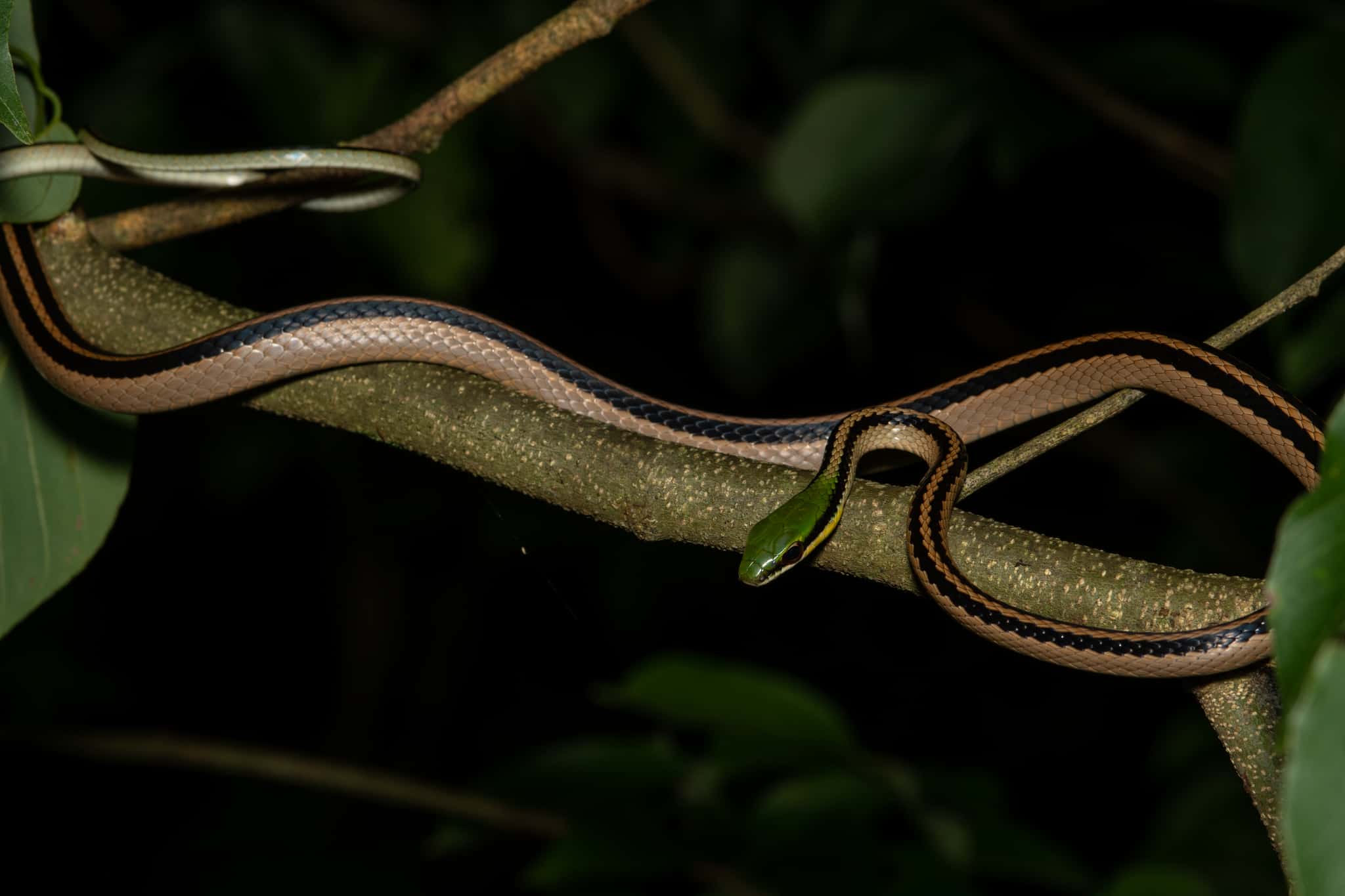
Unlike the coral snake family, which numbers 82 in the Americas alone, the Leptodrymus family has just one member: Leptodrymus pulcherrimus. This is a thin, whip-like species which has sacrificed bulk for length, with the longest individuals reaching 160cm.
Striped lowland racers are found in four countries: Nicaragua, Costa Rica, Honduras and Guatemala. They mostly eat bulky lizards, including species far thicker than their own body. Confirmed prey include giant whiptails, blackbelly racerunners, and rosetail lizards, which they usually seize by the head.
Forests are their main habitat, ranging from dry woodlands to lowland rainforests. They’re also abundant in open grasslands next door to forests. While perfectly at home on branches and able to cross thin ones very easily, striped lowland racers are mostly a ground dwelling-snake.
This Nicaraguan snake is easily recognisable by a signature black stripe covering its entire body. This begins at the snout, runs through the eye, travels down the neck, and continues unceasingly to the tip of the tail. There’s also a green patch found only on the head. Striped lowland racers are mainly orange and black, in alternating vertical stripes. They have a white belly, with slight yellow stains at the edges.
| 6 | Taylor’s blind snake |
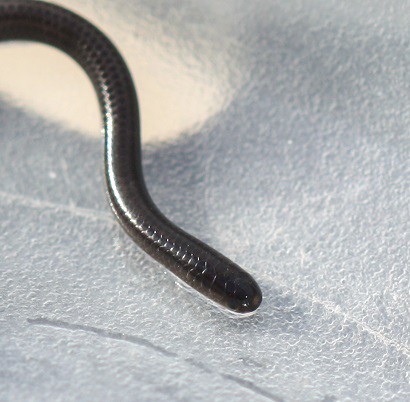
Also known as Epictia ater, with ater translating to “black” in Latin. This is a shy burrowing serpent with terrible eyesight, and a maximum length of 27cm. Taylor’s blind snake looks incredibly black from a distance, with its eyes completely blending in. Even the palest variants are dark chocolate brown. Up close, subtler details appear, such as a pale border around each scale, caused by the pigments accumulating first in the centre of scales. Taylor’s blind snakes also have a yellow tail tip, emerging from a sea of continuous darkness.
Taylor’s blind snake avoids highlands and remote, misty mountain ranges. Instead, they inhabit lowlands in western Nicaragua, from 40-100 metres. This is a forest snake which doesn’t discriminate between types. They appear on the leafy floors of lowland arid forests, dry topical forests and lowland premontane forests.
Taylor’s blind snakes move during both night and day. Like other Epictia members, they have teeth in both jaws, which differs from other blind snake families. Epictia has 44 members worldwide, but only two in Nicaragua: Epictia ater and the new Epictia rioignis, discovered in 2019.
| 7 | Dunn’s earth snake |
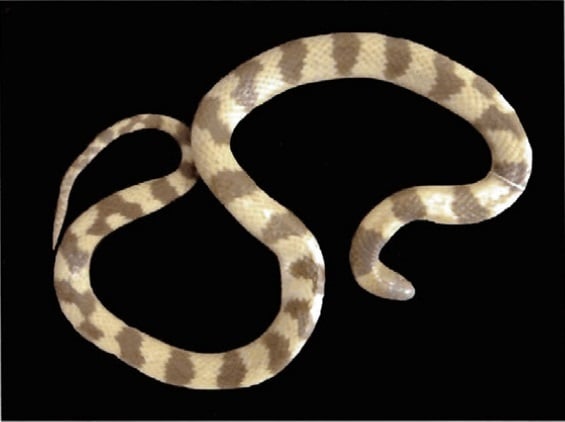
This is Nicaragua’s rarest snake, so rare that only one has been found, ever. The original Dunn’s earth snake was unearthed in 1932 by Karl Schmidt, in an unlikely location: the stomach of a central American coralsnake. It had a total length of 36.7cm, and clearly belonged to the burrowing Geophis family, which has 53 members.
This one snake was enough to identify it as an all-new species, as the belly scales and scales surrounding its mouth clearly varied. Fortunately, it hadn’t digested much, and Dunn’s earth snake was shipped off to a museum.
Since 1932 though, no more have turned up in Nicaragua, or elsewhere. Schmidt was extremely vague about where the original snake was found, listing Matagalpa, which is both a city and a municipality. He provided coordinates at an altitude of 705 metres, but this landed squarely on the city of Matagalpa, which was extremely unlikely for the forest-dwelling Geophis family.
Dunn’s earth snake might as well live in the Earth’s core judging by how rare it is. It’s all very murky, but in 2019, Fugler’s shadow snake was rediscovered in Ecuador, 54 years after its original sighting. There’s still hope for Dunn’s earth snake yet.
| 8 | Freminville’s scorpion-eating snake |
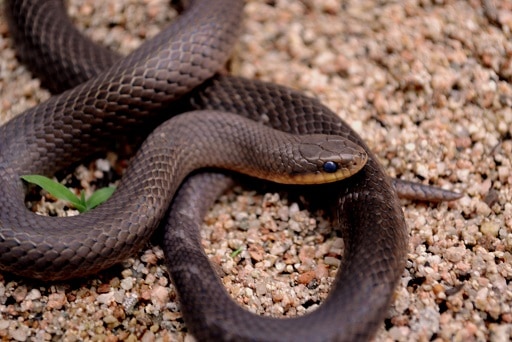
A common snake in Nicaragua, as well as Costa Rica to the south. Stenorrhina freminvillei hugs the Pacific coast, and has special overlapping scales, which form an armour against a scorpion’s sting. This is fortunate, given that scorpions make up the bulk of their diet. This snake eats species like the common black scorpion (Centruroides margaritatus), while tarantulas have also been pulled from their stomach. This snake seems to hoover up all the creatures that humans fear.
Freminville’s scorpion eaters are mostly harmless, although superstitious villagers believe that they cause severe haemorrhaging. They’re flexible hunters, and will sometimes lunge for a scorpion’s dangerous tail first. In other cases, they’ll grab the scorpion’s belly with their jaws, before rapidly applying a coil to the piercing tail to immobilise them. This is one of only two members of the Stenorrhina scorpion-eating family. The other is Stenorrhina degenhardtii, which is far more common, ranging from Mexico to Venezuela.
Stenorrhina freminvillei averages at 50cm (max 85cm), and is sometimes prey for the Central American coral snake, as well as black-ringed false coral snakes. They fight back with a fury, delivering snapping bites to the coral snake’s body, which themselves rarely give up instantly, resulting in prolonged duels.
| 9 | Southern cantil |
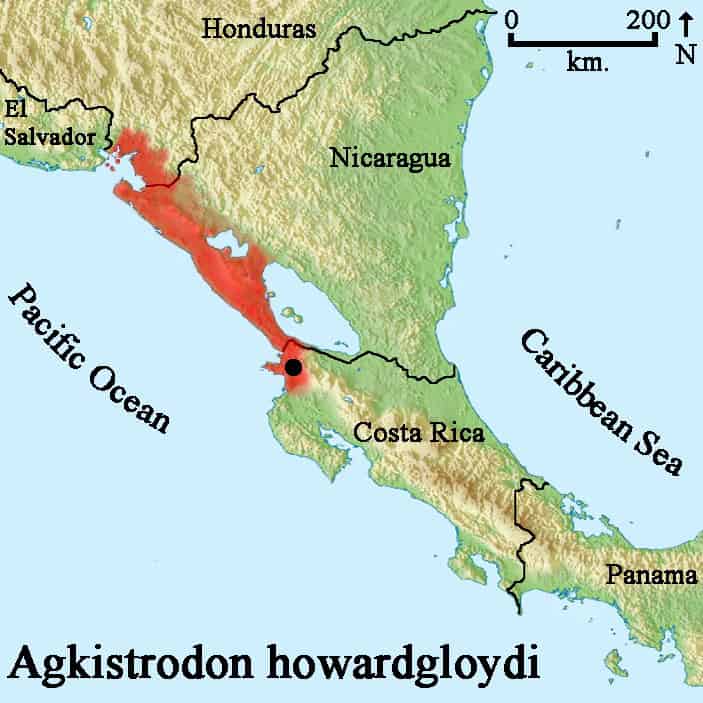
The most southern member of the Agkistrodon viper family, which also includes US cottonmouths and copperheads. Agkistrodon howardgloydi inhabits the Pacific coast of Nicaragua, crossing into Honduras to the north, and Costa Rica to the south. The southern cantil is a rare species even throughout its heartlands. It sticks to lowland deciduous forests, many of which have been unrepentantly slashed down. Sightings have become fewer and further between recently.
This species reaches a maximum of 96cm in males, while females peak at just 82cm. Lab tests show that their venom is equally toxic to the Mexican cantil (common in El Salvador), their closest relative. Southern cantils are separated by a few signature features: a pair of white stripes on each cheek, several subtler markings on the face, and an orange chin and throat which suddenly darkens along the belly.
One point in favour of Agkistrodon howardgloydi not going extinct is a highly varied diet. They can dine on sheep frogs, spinytail iguanas and spiny field mice alike, shifting towards mice with age. As they stick to forests, never inhabiting urban areas, city dwellers of Nicaragua have no need to worry about this venomous snake.
| 10 | Central American lyre snake |
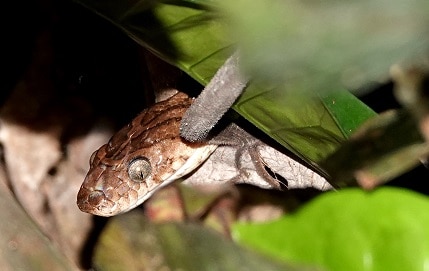
The most southerly member of the lyre snake family (Trimorphodon), which mainly inhabit Mexico. Central American lyre snakes can measure 1.8 metres, and are very common around the Nicaraguan capital of Managua. They’re naturally attracted to human structures such as fences, parking spaces with painted white lines, or even houses. This snake can hide itself under furniture, poking its head out to check the coast is clear, and doesn’t mind slithering along cold stone tiles in gardens.
Trimorphodon quadruplex is venomous, but only mildly. When tested, its toxins showed relatively weak haemorrhagic and myotoxic (muscle-shredding) powers. Its venom is also simple, with a small number of toxin-encoding proteins.
Central American lyre snakes are less common in the east, hugging the Pacific coastline of western Nicaragua and northwest Costa Rica. They’re able to climb trees, but usually stick to the ground. Trimorphodon quadruplex are covered with irregular, deformed blotches, contrasting brown against beige and even darker brown. They resemble venomous vipers, and combined with their love of human settlements, this leads to many being killed out of superstition.
